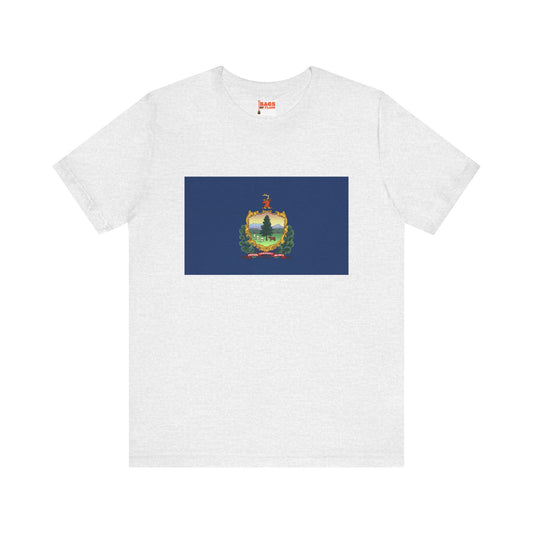-
Vermont Backpack
Regular price $59.79 USDRegular priceUnit price / per -
Vermont Pillow
Regular price $22.65 USDRegular priceUnit price / per -
Vermont Mug
Regular price $11.65 USDRegular priceUnit price / per -
Vermont Trucker Cap
Regular price $15.08 USDRegular priceUnit price / per -
Vermont Leather Patch Hat
Regular price $18.85 USDRegular priceUnit price / per -
Vermont Inspired Sweatshirt
Regular price $34.15 USDRegular priceUnit price / per -
Vermont Flag Sweatshirt
Regular price $34.15 USDRegular priceUnit price / per -
Vermont Sweatshirt
Regular price $34.15 USDRegular priceUnit price / per -
Vermont Hoodies
Regular price $34.40 USDRegular priceUnit price / per -
Vermont T-shirts
Regular price $22.79 USDRegular priceUnit price / per -
Vermont Flag Hoodies
Regular price $34.40 USDRegular priceUnit price / per -
Vermont Inspired Hoodie
Regular price $34.40 USDRegular priceUnit price / per -
Vermont Inspired T-shirt
Regular price $22.79 USDRegular priceUnit price / per -
Vermont Flag T-shirts
Regular price $22.79 USDRegular priceUnit price / per
Collection: US State: Vermont VT flag
The Vermont flag, also known as the flag of Vermont, symbolizes pride and identity for the residents of the Green Mountain State. With its unique design and rich history, the flag holds significant meaning for many Vermonters. We will explore the design, historical context, symbolism, current relevance, and controversies surrounding the Vermont flag.
Overview of the Vermont Flag

The flag of Vermont is distinguished by its rich blue field, serving as a backdrop to the state's elaborate coat of arms. At the heart of this emblem lies a lush pine tree, flanked by bundles of wheat and a robust cow, beneath which the state's guiding principle, "Freedom and Unity," is boldly inscribed. This ensemble is encased within a verdant wreath, topped with a stag's head, further enhancing the flag's connection to Vermont's natural and agricultural wealth.
The selection of the blue background is not by chance; it mirrors the vast skies and tranquil waters that characterize Vermont's picturesque landscape. Each element within the coat of arms has been thoughtfully chosen to encapsulate key facets of Vermont's identity—from its deep forests and farming roots to the values that have steered the state since its inception. This flag does more than just signify the state's sovereignty; it narrates the enduring story of Vermont's past, present endeavors, and aspirations for the future.
Historical Context of the Vermont Flag
The current design of the Vermont flag, officially adopted in 1923, is deeply rooted in Vermont's rich history. Before this date, Vermont had several flags representing its status as an independent republic before it became the 14th state to join the Union in 1791. The flag's evolution reflects significant periods in Vermont's history, including its early settlement, struggle for independence, and eventual statehood. The 1923 adoption symbolized a desire to unify the state's identity under a singular emblem that encapsulated Vermont's values, natural resources, and commitment to freedom and unity.
This transition to the current flag marked a pivotal moment, moving away from designs heavily influenced by military banners to one more accurately reflecting Vermont's peaceful landscapes, agricultural abundance, and community ethos. The enduring design of the flag since its last adoption speaks to its significance and the historical continuity it represents for Vermonters. This moment in history was not merely about adopting a new flag but about weaving together Vermont's past, present, and aspirations into a visual symbol that would stand the test of time.
Symbolism Behind the Vermont Flag
At the core of the Vermont flag's design lies a deep and intricate web of symbols that reflect the state's rich cultural and natural heritage. The lush pine tree at the center is a beacon of Vermont's expansive forests, a nod to the state's natural beauty and timber industry. Flanking the pine are sheaves of wheat and a single cow, symbols that pay homage to Vermont's agricultural traditions and its pivotal role in dairy farming. These elements are encased within a wreath, symbolizing victory and the state's triumph over challenges throughout history.
Beneath this symbolic assembly, the motto "Freedom and Unity" is prominently displayed, encapsulating Vermont's dual commitment to individual rights and collective progress. This motto is a constant reminder of the balance the state strives to maintain between personal liberty and the welfare of the community. A stag's head completes the flag's composition atop the coat of arms, symbolizing the state's wildlife and echoing Vermont's deep connection to its natural environment. Together, these symbols weave a narrative of Vermont's enduring values, its reverence for nature, and the dynamic spirit of its people.
Current Relevance of the Vermont Flag
Today, the Vermont flag plays a significant role in public life and cultural expression within the state. It is prominently displayed at state government facilities, schools, and various community events, symbolizing Vermont's pride and unity. The flag's presence at military ceremonies underscores the state's respect for its veterans and active-duty service members, highlighting the community's support for those who serve. On a broader scale, the flag represents Vermont at national gatherings, showcasing the state's distinct identity and values on a wider platform.
Despite its widespread use, the flag has yet to be immune to scrutiny and debate. Discussions have emerged about whether the current flag adequately represents Vermont's evolving demographics and contemporary values. Some community members advocate for a redesign that more inclusively reflects the diversity and forward-looking spirit of the state. These debates underscore the flag's ongoing relevance as a historical artifact and a living symbol of Vermont's identity, which may continue to evolve as the state grows and changes.
Additional Facts About the Vermont Flag
Displaying the Vermont flag follows specific protocols to ensure respect and uniformity. When flown, the flag’s coat of arms must be positioned correctly, ensuring that it faces forward with the hoist side on the left as viewed by an observer. This mirrors the standards applied to the display of the American flag, emphasizing the importance of presentation and respect for state symbols.
Interestingly, despite its historical significance and the deep symbolism ingrained in its design, the Vermont flag has faced criticism from the vexillological community. In a 2001 survey conducted by the North American Vexillological Association, an organization dedicated to the study of flags, the Vermont flag was ranked among the ten worst state flags in North America. This criticism primarily stems from its complexity and the use of a state seal on a blue background, a common design approach that many argue lacks distinctiveness and simplicity.
Additionally, the flag's etiquette stipulates that when flown alongside the American flag at state buildings and various events, it should be positioned to the observer's left, highlighting the state's unity with the nation while respecting the flag's symbolic stature. This practice reinforces Vermont's allegiance to the United States while showcasing its unique identity and values encapsulated within its flag. These nuanced aspects of the Vermont flag's design, criticism, and display protocols add depth to its understanding and appreciation among Vermonters and flag enthusiasts alike.




























